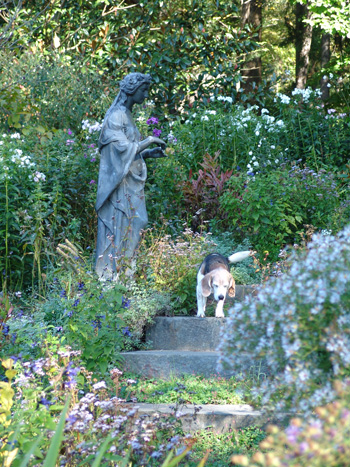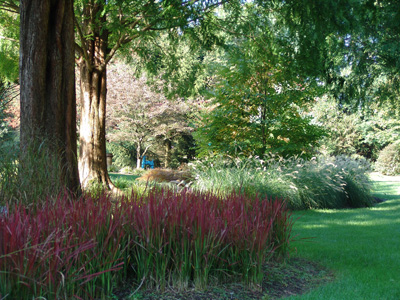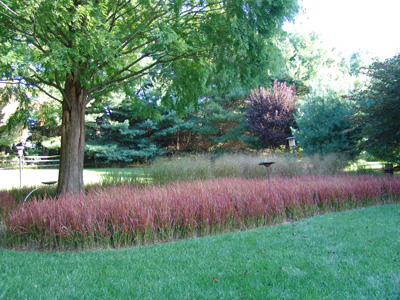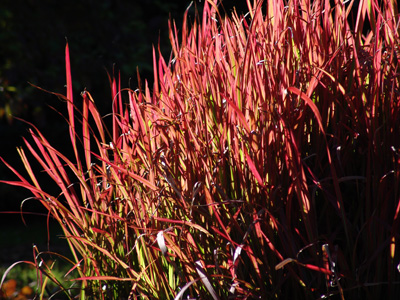Imperata cylindrica 'Red Baron'

For the past several weeks, I have had the pleasure of visiting gardens in their fall splendor in preparation for the 2010 Garden Day (It will be on Sunday, September 12, 2010 if you are the type who likes to mark your calendar.) Some wonderful fall plants I have seen in these travels include: asters, anemone, and phlox. But great types of plants that always add to a fall garden are grasses.

Grasses add texture, movement, and color to the garden of Pat Smith. photo credit: R. Robert
In particular, we visited the garden of Pat Smith, who uses grasses to add movement, texture, and color to her garden. Pat was inspired by her time spent in England. During that time, grasses were the latest garden sensation and she brought that enthusiasm and experience to her garden in Chadds Ford. Her large swaths of grasses provide food and shelter for the numerous bird species she and her husband attract to the garden with birdfeeders, birdhouses, birdbaths, and plantings of other bird-friendly trees like dogwoods and hollies.

A swath of Japanese blood grass in Pat Smith's garden. photo credit: R. Robert
Her most dramatic swath of grass is a planting of Imperata cylindrica ‘Red Baron’ or Japanese blood grass. As the cultivar name implies, this grass creates vivid red color in your garden. In the spring, ‘Red Baron’ emerges with green blades and red tips. Over the course of the growing season the red color intensifies and runs almost the length of the blade. This striking display peaks from late summer into autumn, creating a great presence in the fall garden. This planting is most jaw-dropping when the waning light of the autumn sun strikes the translucent red blades.

The autumn sun lighting the red blades of Imperata cylindrica 'Red Baron'. photo credit: R. Robert
Unlike the straight species, ‘Red Baron’ spreads very slowly by shallow rhizomes and is rarely seen blooming with no noted seedlings from this bloom in North America. It reaches a height of about 20 inches, thus plant it in the front of your perennial border. You may see this tough plant in parking lots or traffic islands used as a groundcover because of its drought tolerance. Like most grasses, it should be cut back in March before the new growth emerges.
At the Scott Arboretum, we use ‘Red Baron’ in our garnet planting. This is the planting around the Rose Garden circle by Parrish Hall. Because garnet is Swarthmore College’s official color we have themed this bed with garnet plants. ‘Red Baron’ creates an effect of garnet color well into the fall when most students are traversing the grounds.
To learn more about grasses in the garden, attend Dave Demers lecture titled “Of Grasses and Grasscapes: Ornamental Grasses for Your Garden” at the Perennial Plant Conference on Friday, October 16. Registration is required.





No Comments